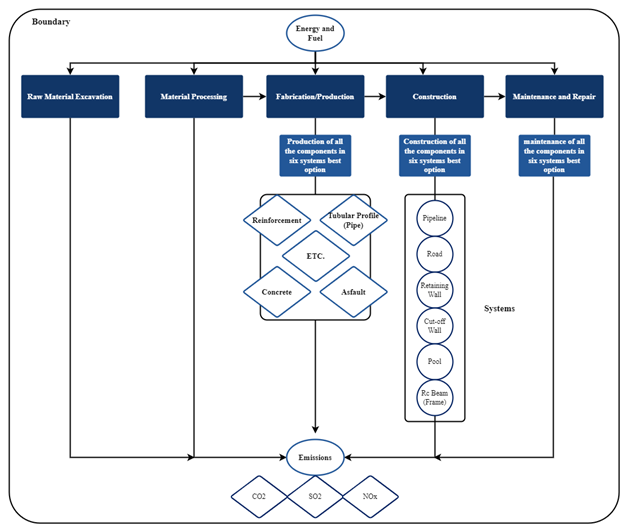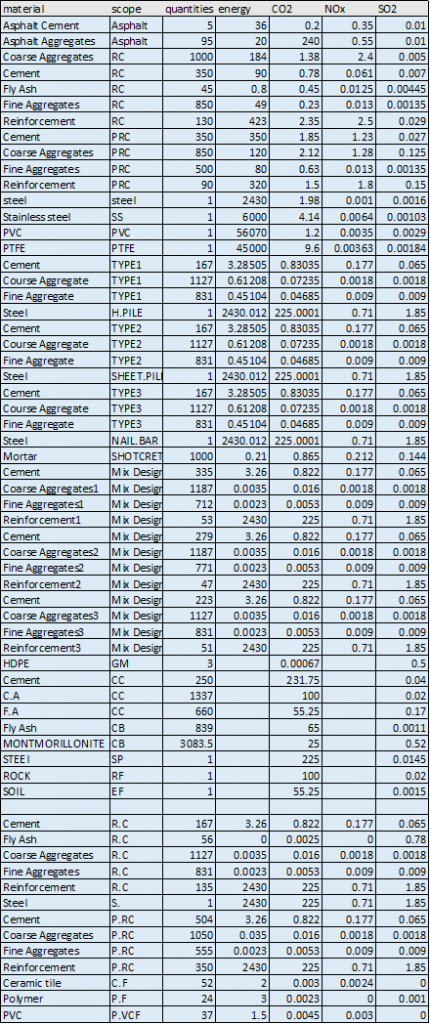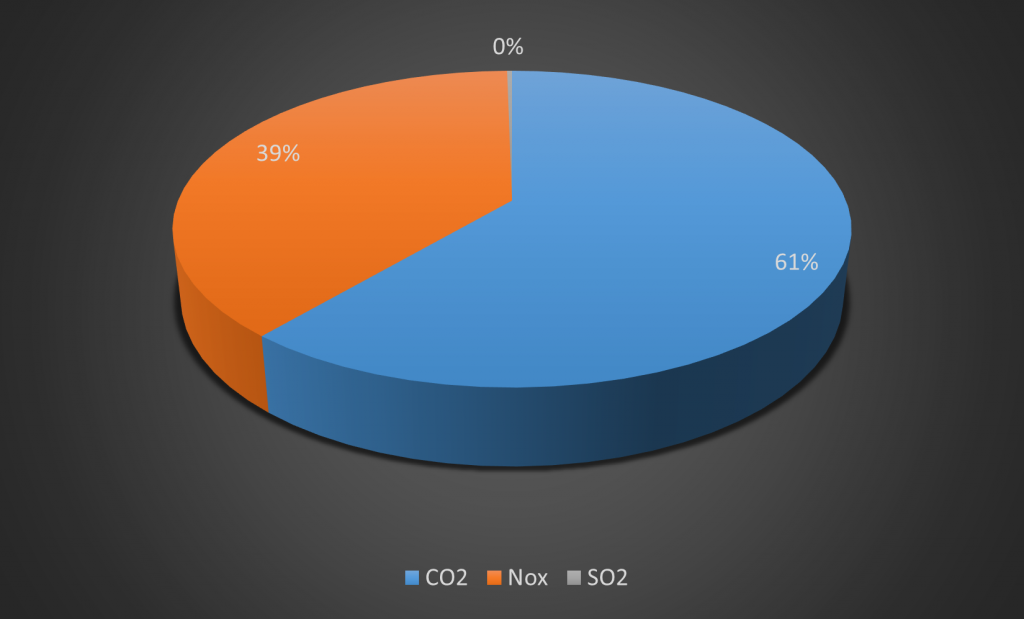Scope and Goal
The LCA of Fossil Fuel transportation management aims to assess the environmental impact of every six systems over their entire life cycle, from the extraction of raw materials to the end of life. In our assessment, the system demolition after end of each individual system lifespan is not considered. The scope of the assessment will include the Pipe, RC frame, retaining wall, cut-off wall, road and pool within the boundary which is defined below:
Challenges:
In order to accurately assess the environmental impact of the six components integration, it is necessary to standardize their emissions profiles. This involves establishing a consistent framework for each system and ensuring all components are evaluated within that boundary. A table should be created to compare the greenhouse gas (GHG) emissions produced by each system using a standardized unit of measurement. The data for each system should be sourced from reputable references to ensure accuracy and reliability. By setting clear boundaries and providing consistent data, we can effectively analyze and compare the environmental impact of integrated systems.
Integrating these six systems can indeed be beneficial in conducting a life cycle analysis of the project. By bringing all components together and operating them as a cohesive unit, the total maintenance days required for sure will be less than the sum of the maintenance days needed for each individual system. This integrated approach can help reduce the overall environmental impact, including greenhouse gas emissions, by streamlining operations and minimizing downtime. By coordinating maintenance schedules and resources, the project can optimize efficiency and decrease the negative effects of GHG emissions on the environment. This method can contribute to a more sustainable and environmentally friendly project overall.
The LCA will consider the embodied energy and resource use required to produce the materials used in construction, as well as the energy use and maintenance requirements during the operational phase of the systems. The impact of decommissioning processes will not be considered. Figure 1 shows the goal and the boundary of this assessment. It also shows the overall energy consumption and GHG gases emission during the life time of the systems as well as project costs.
The costs are calculated by multiplying energy, CO2, NOx, and SO2 by the dollar amount per unit considered for each component. The price per unit for these components is listed below:
|
overall energy consumption and GHG gas emission of integrated systems |
||||
|
Energy |
CO2 |
NOx |
SO2 |
Costs |
|
3299098 |
40775054 |
25685686 |
183212.2 |
2.154946 |
Table 2: overall energy consumption and GHG gas emission of integrated systems
Portion of Greenhouse gases emission based on the energy consumption



